Microsoft’s Windows Remote Desktop is a powerful programme that lets users connect to and handle another computer over a network as if they were sitting right in front of it. This feature is especially important in 2024, when working from home, working with people around the world, and managing IT from afar are all becoming more common.
Remote Desktop isn’t just a way to connect to your work computer from home or work computer from home; it’s also a way to make work more efficient, open, and collaborative. Remote Desktop can help you whether you’re an IT expert in charge of server farms, a businessperson viewing your office PC from afar, or a person helping a friend or family member fix a computer problem.
This guide is meant to give you all the information you need to set up and use Windows Remote Desktop correctly. From setting up Remote Desktop for the first time, the network requirements, and security issues to fixing common problems and looking at advanced features, we’ve covered everything you need to know to get the most out of it.
We’ll also talk about the newest improvements and features that came out in 2024, making sure you know the best ways to use a remote desktop in a safe and effective way.
This guide will help you learn Windows Remote Desktop, whether you’re a beginner looking for basic information or an experienced worker wanting to keep your skills up to date with the latest changes.
Table of Contents
Setting Up Microsoft Remote Desktop Connection
To start using the application, first, check if it’s installed on your device. Open the Settings menu, select “System,” then scroll down to “Remote Desktop” and enable the “Enable Remote Desktop” function.

If you are using Windows 10, make sure both of the following options are turned on: “Keep my PC awake for connections when it is plugged in” to ensure your PC is always ready to connect when plugged in, and “Make my PC discoverable on private networks to enable automatic connection from a remote device” so that your PC can be detected on the network.
To view or modify these options, click on the “Show appropriate settings” link. If you want to edit one of the two options, click on the “Advanced settings” link. You can also enable both options here.
Network Level Authentication (NLA) Advanced Settings for Better Security: To protect your remote connections, turn on NLA by checking the box that says Always On. This setting adds an extra layer of protection by making sure that all users are verified before they can log in.
Taking Care of Access Rights
Changes to the internal network: You can skip the External connections part if you’re connecting within the same network. The number that is shown is the default for the Remote Desktop protocol.
Management Access: Users who have management rights on the host PC can connect to it from afar by default. Your Microsoft or company account should have manager rights to make it easy to get in.
Providing more users with access

It’s possible to give other accounts remote access. To do this, go back to the main Remote Desktop settings and hit Select users that can remotely access this PC. Enter the account that you want to use and click Add.
Name of the Computer and Conclusion
Identification by computer: Write down the name of the computer because you will need it to log in from afar. In the system options, you can change it to something easier to remember.
Finishing Up: When you’re done setting up everything the way you like it, close the Remote Desktop settings.
The process is easier to follow in Windows 11. You are shown the name of the PC right away, along with the choice to add users for remote access. You can change who can access this PC remotely by clicking on Select who can remotely access this PC.
After following these clear steps, your host PC is now ready to offer a safe and effective Remote Desktop experience, making it easy for you to connect to your home or work computer.
How to Connect to a Remote PC from Your Windows Computer
Let’s say you need to use your home computer to connect to your working PC. Let’s look at how to set up a Remote Desktop Connection (RDC) on a few different versions of Windows.
How to Get to the Windows 10 Remote Desktop Connection Tool:
To start the RDC, press the Start button, scroll down the list of programmes until you find Windows Accessories and then press the Remote Desktop Connection option.
As of Windows 11:
To find the tool, press the Start button, go to All Apps, scroll down until you see Windows Tools, and then start the Remote Desktop Connection from that menu.
To Get Older Versions of Windows:
For Windows 8.1, press the Win key and S at the same time to open the Search tool. Type windows remote desktop into the search bar and click on the right result to open the RDC.
For Windows 7: Go to All Programmes, Accessories, and click on the Remote Desktop Connection link. Also, click on the Start button.
Starting the connection for the remote session: To connect to a computer, type its name or IP address into the Computer box in the RDC window.
Passwords for users: Click Show Options to see more choices. Type in the login that you want to use for this session.
Keeping track of credentials: Check the box next to Allow me to save credentials before you hit Connect so you don’t have to type your credentials again when you connect again.
Safety and Authentication
Entering a password: In the credentials box, type in your password when asked. To make things easier in the future, you can choose Remember Me to save your password.
Security Prompt: You may see a security message that questions the identity of the remote machine. If you want to continue using this computer without being asked again, tick the box next to Don’t ask me again for connections and then click Yes.
Getting involved with the remote setting
As soon as you connect, you’ll be taken to the desktop of the remote computer, where you can use programmes, handle files, and do other things as if you were there in person.
Navigational Bar: At the top of the screen, a blue connection bar shows up with a number of choices that can help you improve your remote session.
Bar Functions: You can pin the bar so that you can always get to it. The icons on the left let you see how fast your link is, and the icons on the right give you tools for managing windows, such as the ability to minimize them, resize them, and end the session.
It is now safer and easier to connect to and use a remote Windows PC with these new steps. This makes it possible to work remotely on computers running different versions of the Windows operating system.
Adjusting the Settings for Your Remote Desktop Connection
When you open the setup screen for Remote Desktop Connection (RDC), you’ll see a lot of choices that you can change to make your remote session better.
Settings in General
Save the current settings to an RDP file on the General tab to make future meetings easier. After that, this file can be easily copied to any other computer to make the process work again.
Improvements to the display
With the Display button, you can change the size and colour depth of the remote window to get the best display quality for you.
Using Local Resources Together
Go to the Local Resources tab to set up how speakers and printers, as well as other local devices and resources, will work with your remote session. Choose when and how to use Windows key combinations to make it feel like you’re working on your own PC.
Getting the Best Results
You can manually change the connection quality settings on the Experience tab to get the best results for your network speed. You can set the default steps for server authentication on the Advanced tab. This will make sure that your connection is smooth and safe.
Making use of the Windows 10 and 11 Remote Desktop app
The Microsoft Remote Desktop app is an alternative to the standard RDC tool. It has a better interface and more features for Windows 10 and 11 users.
Getting the app: Get it from the Microsoft Store and open it to begin.
Putting in Links: To start setting up your online connections, click Add and then PCs.
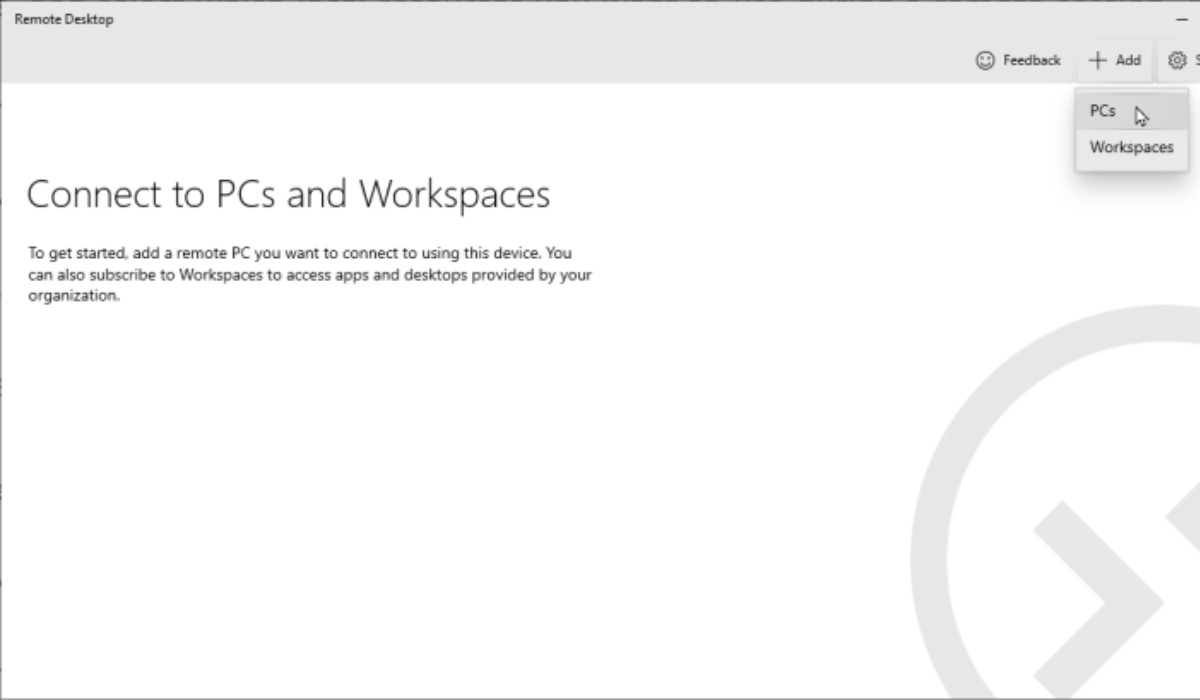
(Credit: Pcmag)
Info on the connection: Enter the name of the PC to get to it directly, or add user details to have it log you in automatically.

(Credit: Pcmag)
Click on the PC’s icon twice to start the session. If asked, confirm the certificate by accepting not to be asked about it again.
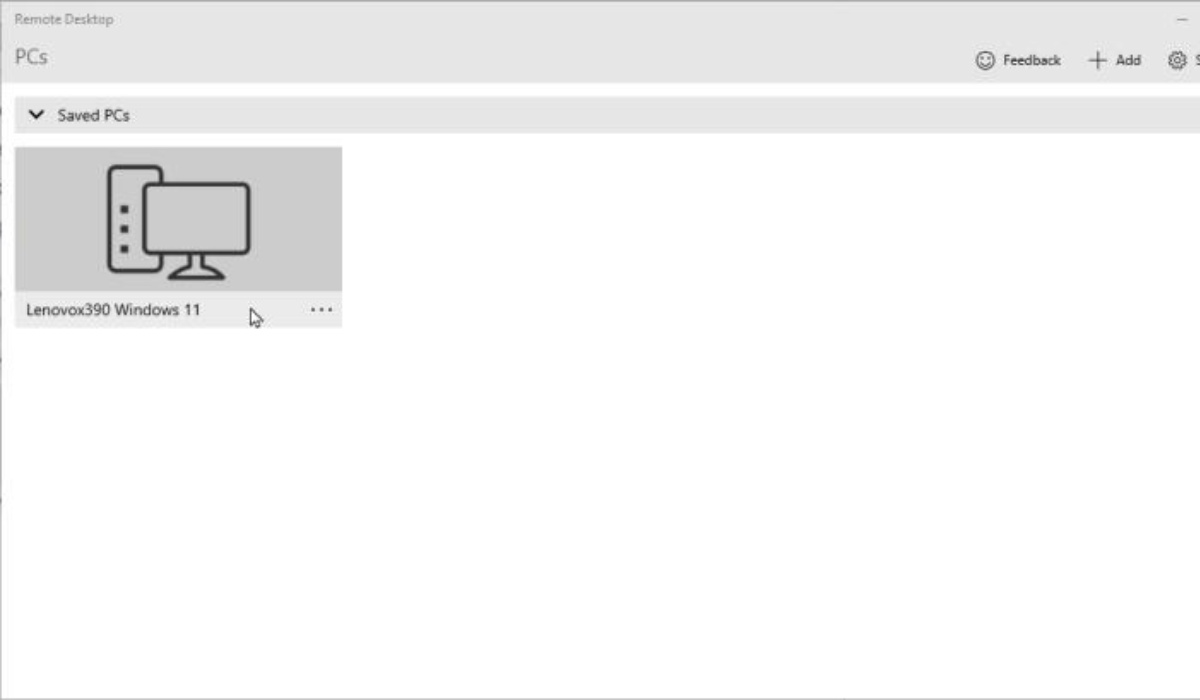
(Credit: Pcmag)
How To Connect From A Mac
The first step is to open Launchpad or pinch four fingers together on your screen. Next, locate and open the Microsoft Remote Desktop application.
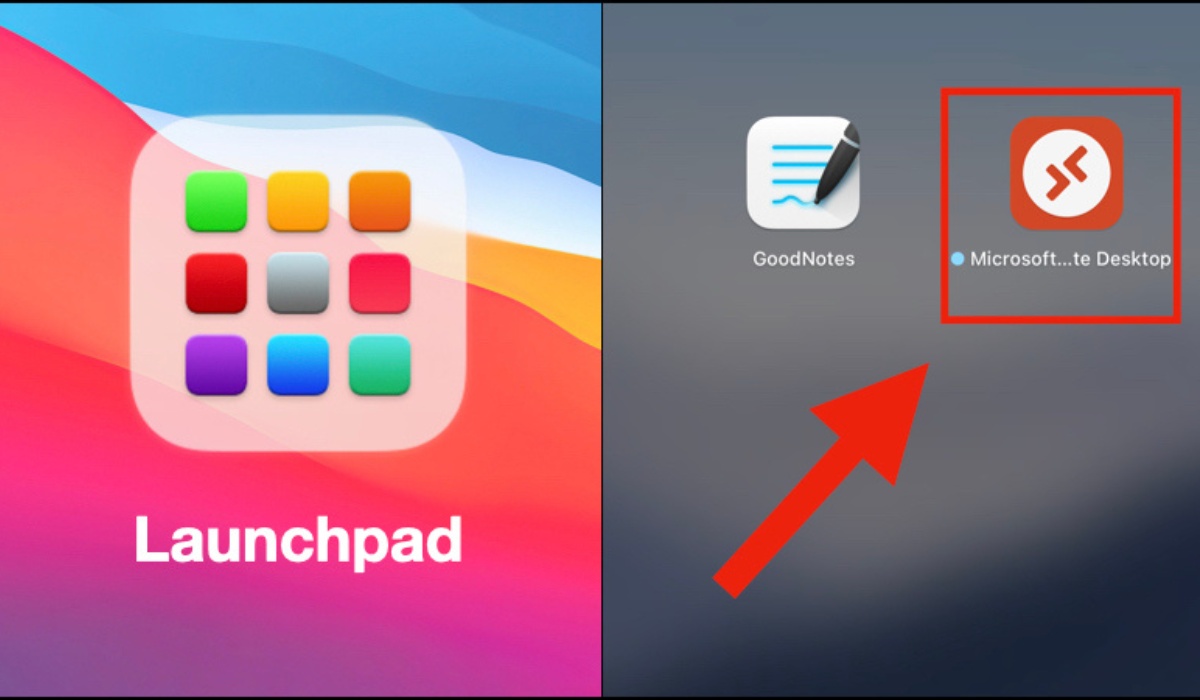
Within the application, click on the “Add PC” button. A new window will appear, and you need to enter the IP address of the computer you want to connect to in the “PC name” field. After entering the IP address, press the “Add” button to save the information.
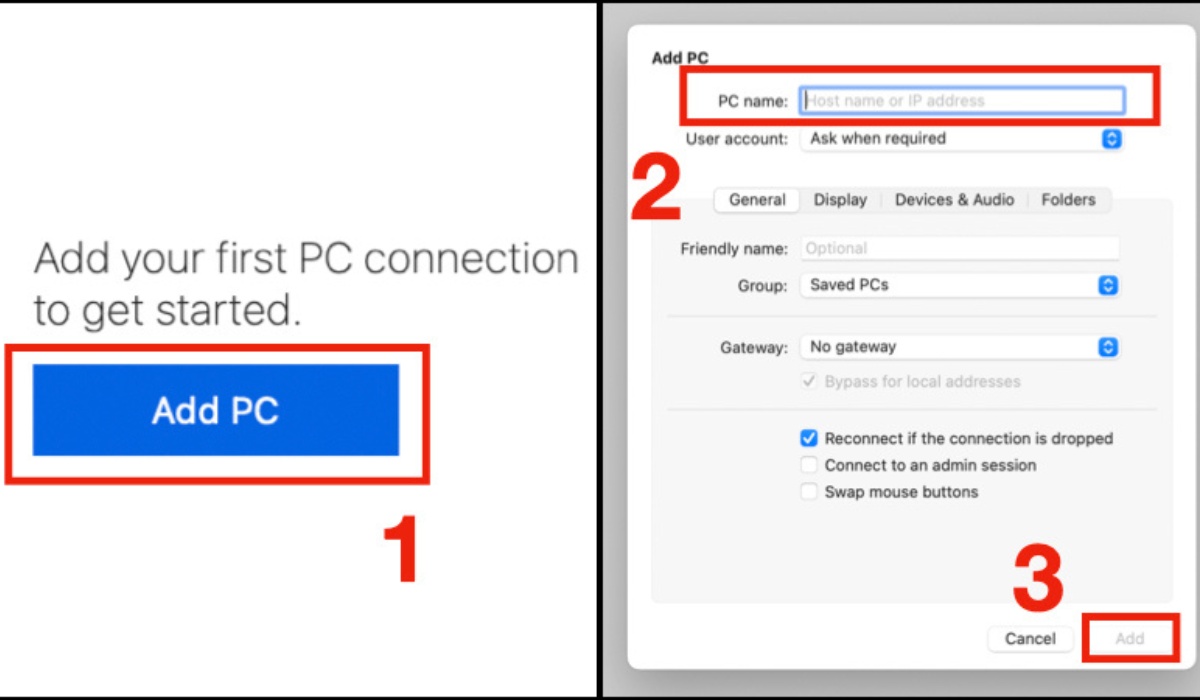
Next, select the computer name from the list displayed in the Remote Desktop window. When prompted, enter the correct username and password in their respective fields. Double-check to ensure that the entered information is accurate.
Once you have completed these steps, you can press the button to connect to the remote computer. Ensure that your network connection is stable to avoid any issues during the connection process.
From an iPad or iPhone / Android Phone
To get started, you need to download the Microsoft Remote Desktop app on your mobile device, whether it’s an Android phone or an iPhone/iPad. Once downloaded, open the Microsoft Remote Desktop app on your mobile device.
In the app, select the plus icon in the upper right corner. Then, in the “Add New” menu, tap on the “Desktop” option.
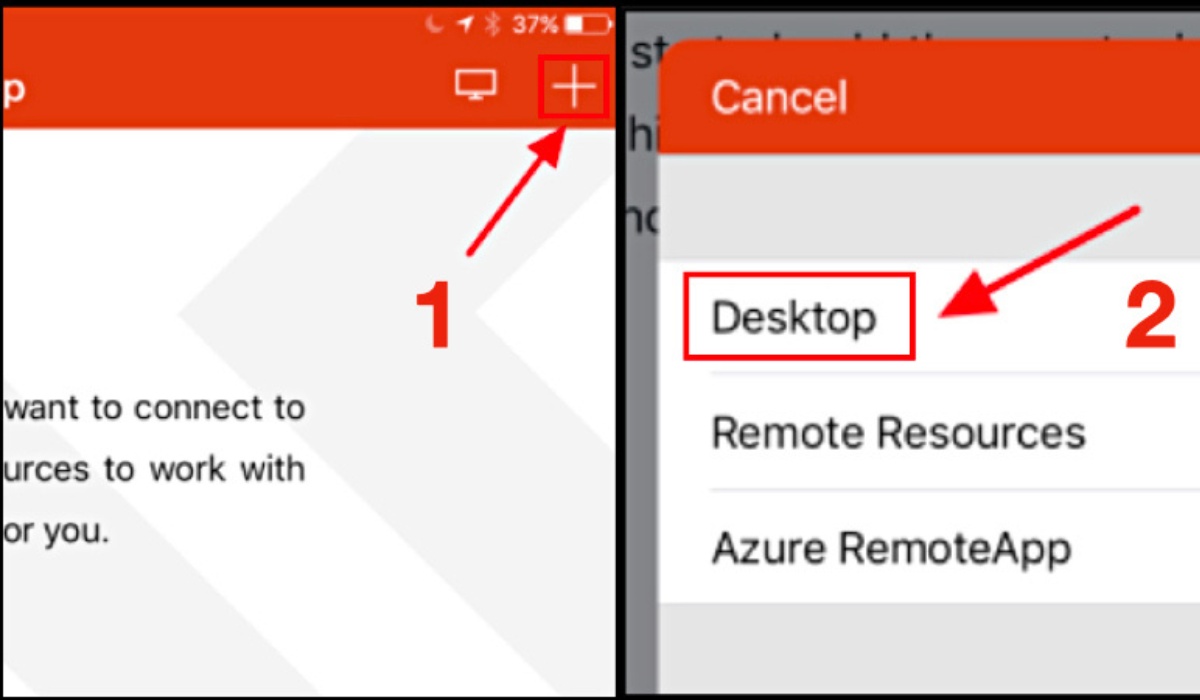
Next, enter the IP address of the computer you want to connect to in the “PC name” field and press the “Done” button to save the information.
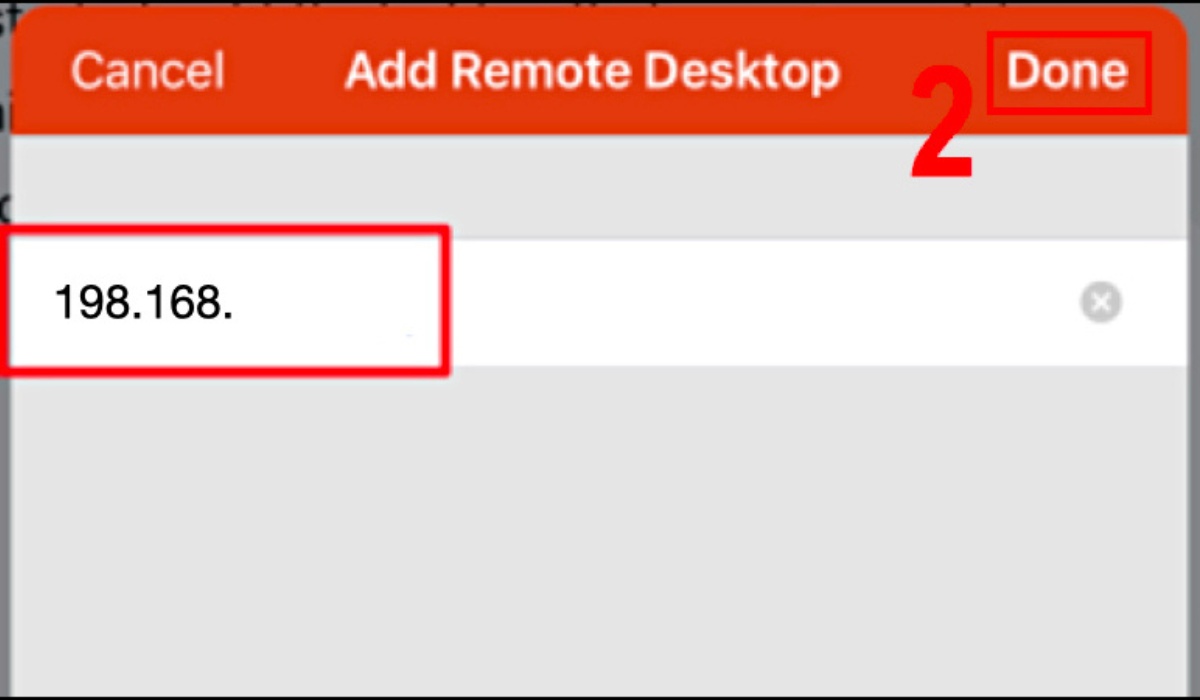
Then, when prompted, enter the correct username and password. Make sure that the entered information is accurate.
With these steps, you should be able to connect to your computer remotely from your mobile device. Ensure that your network connection is stable to avoid any issues during the connection process.
Keyboard Shortcuts on Remote Desktop
To facilitate the use of Remote Desktop, it’s advisable to utilize keyboard shortcuts. Refer to the shortcut table below for Remote Desktop on Windows computers.
You can perform similar actions on a MacBook, but you will need to replace the Ctrl key with the Command key.
| Features | Shortcuts |
| Switch the Remote Desktop client between full-screen mode and windowed mode | Ctrl + Alt + Pause |
| Set up Remote Desktop in full-screen mode | Ctrl + Alt + Break |
| Capture a screenshot of the active Remote Desktop window | Ctrl + Alt + Minus |
| Capture a screenshot of the entire Remote Desktop | Ctrl + Alt + Plus |
| Reboot the remote computer | Ctrl + Alt + End |
FAQs
1. Can I use Windows faraway Desktop to connect to a faraway PC even if it is asleep or turned off?
The remote PC needs to be on and not in sleep mode for Remote Desktop to work. But some PCs have a feature called Wake-on-LAN that, if set up properly, can wake the PC from sleep mode.
2. Is it safe to save my password in the Remote Desktop Connection client?
It is safe to save your credentials if you are on a private, secure machine. On public or shared computers, though, it’s not a good idea because someone else could get in without permission.
3. What can I do to speed up and improve the performance of my Remote Desktop connection?
You can speed things up by making sure that neither the local nor the faraway computers are running programmes that aren’t needed and are using up resources, and by setting the Experience settings to match the bandwidth of your network.
4. Can I use Remote Desktop to print documents from a computer far away to a printer near me?
Yes, you can print to your local printer from the remote session. To do this, make sure the printer resource is turned on in the Remote Desktop Connection client’s Local Resources tab before you join.
5. How many people can use Remote Desktop to connect to a PC at the same time?
With Remote Desktop, only one person can usually connect to a Windows PC at a time. But Windows Server operating systems let multiple links happen at the same time if they have the right licenses.
